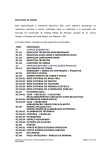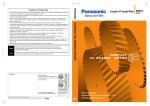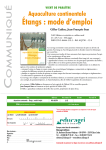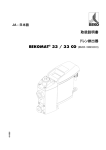Download Basic Characteristics Data
Transcript
Basic Characteristics Data Basic Characteristics Data Model Circuit method Switching frequency [kHz] Inrush current protection Input current [A] (reference) Material Single sided Double Series Parallel sided operation operation SU/SUC1R5 Flyback converter 350 - 1900 Refer to Table1,2 - glass fabric base,epoxy resin Yes Yes *1 SU/SUC3 Flyback converter 200 - 1400 Refer to Table1,2 - glass fabric base,epoxy resin Yes Yes *1 SU/SUC6 Flyback converter 230 - 1950 Refer to Table1,2 - glass fabric base,epoxy resin Yes Yes *1 SU/SUC10 Flyback converter 250 - 300 Refer to Table1,2 - glass fabric base,epoxy resin Yes Yes *1 SUT3 Flyback converter 200 - 1400 Refer to Table1,2 - glass fabric base,epoxy resin Yes Yes *1 SUT6 Flyback converter 230 - 1950 Refer to Table1,2 - glass fabric base,epoxy resin Yes Yes *1 SUT10 Flyback converter 250 - 300 Refer to Table1,2 - glass fabric base,epoxy resin Yes Yes *1 *1 Refer to Instruction Manual. * The value of input current is measured at rated input and load. Table1 (SUS*** +5V output) [A] Input Voltage Output Power 5V 12V 24V 48V 1.5W 0.41 0.16 0.08 0.04 3W 0.78 0.32 0.16 0.08 6W 1.32 0.62 0.31 0.15 10W 2.41 0.98 0.49 0.25 Table2 (SUW*** t12V output) SU.SUC/SUT Series/Parallel operation availability PCB/Pattern [A] Input Voltage Output Power 5V 12V 24V 48V 1.5W 0.43 0.17 0.09 0.04 3W 0.82 0.33 0.17 0.08 6W 1.54 0.59 0.29 0.15 10W 2.51 1.05 0.52 0.26 SU.SUC/SUT-46 DC-DC Converters PCB Mount type Instruction Manual 1 Pin Terminal Configuration SU.SUC/SUT-48 10 Using DC-DC Converters SU.SUC/SUT-59 2 Functions SU.SUC/SUT-48 11 Options SU.SUC/SUT-60 SU.SUC/SUT-48 SU.SUC/SUT-48 2.1 Input Voltage Range 2.2 Overcurrent Protection 2.3 Isolation 2.4 Output Voltage Adjustment Range SU.SUC/SUT-48 SU.SUC/SUT-49 2.5 Remote ON/OFF SU.SUC/SUT-49 3 Wiring to Input/Output Pin Terminals SU.SUC/SUT-50 4 Series/Parallel Operation SU.SUC/SUT-51 4.1 Series Operation 4.2 Redundancy Operation Input Voltage/Current Range SU.SUC/SUT-51 6 Assembling and Installation SU.SUC/SUT-51 Installation 6.2 Automatic Mounting 6.3 Hand Mounting 6.4 Soldering Conditions 6.5 Stress to Pin Terminals 6.6 Cleaning SU.SUC/SUT-61 SU.SUC/SUT SU.SUC/SUT-52 SU.SUC/SUT-52 SU.SUC/SUT-52 SU.SUC/SUT-53 Safety Standards SU.SUC/SUT-53 8 Derating SU.SUC/SUT-54 SU.SUC/SUT-54 SU.SUC/SUT-54 8.1 SU/SUC1R5 Derating Curve 8.2 SU/SUC3 Derating Curve 8.3 SU/SUC6 Derating Curve 8.4 SU/SUC10 Derating Curve 8.5 SUT3 Derating Curve 8.6 SUT6 Derating Curve SU.SUC/SUT-57 SU.SUC/SUT-57 8.7 SUT10 Derating Curve SU.SUC/SUT-58 Peak Current (Pulse Load) 12 Delivery Package Information SU.SUC/SUT-51 SU.SUC/SUT-52 7 9 SU.SUC/SUT-60 Outline of Options SU.SUC/SUT-51 SU.SUC/SUT-51 5 6.1 11.1 SU.SUC/SUT-55 SU.SUC/SUT-56 SU.SUC/SUT-59 SU.SUC/SUT-47 DC-DC Converters PCB Mount type 1 Pin Terminal Configuration Instruction Manual ¿Case Connecting Pin Terminal Units come with a case connecting pin terminal. If this pin terminal is connected to -Vin, radiation noise from the main body decreases. Solder the case connecting pin terminal to PCB to Table 1.1 Pin Terminal Configuration and Functions Pin Terminal Pin No. Function Name +Vin +DC Input 1 RC Remote ON/OFF (excluding 1R5) 2 -Vin -DC Input 3 +Vout +DC Output 4 COM GND of Output Voltage (for Dual Output) 5 Output Voltage Adjustment (please see 2.4) TRM 6 -Vout -DC Output 7 If connected to -Vin, a case potential becomes Case Connecting fixed and radiation noise decreases (applicable 8 Pin only to SUC series). improve reliability. 2 Functions 2.1 Input Voltage Range ¡If output voltage value doesn’t fall within specifications, a unit may not operate in accordance with specifications and/or fail. 2.2 Overcurrent Protection ¿Single Output ¡Overcurrent Operation An overcurrent protection circuit is built-in and activated at 105% View from Above 1 2 Input 3 +Vin +Vout RC TRM -Vin -Vout 8 4 of the rated current or above. It prevents the unit from short circuit 6 and overcurrent for less than 20 seconds. The unit automatically Load recovers when the fault condition is removed. ¡Current Foldback Characteristic If a model that has a current foldback characteristic is connected 7 Case Connecting Pin to a non-linear load such as lamp or motor, or to a constant current load, it may not start up. Please see the characteristics be- ¿Dual(t)Output low. 1 +Vout +Vin SU.SUC/SUT COM Input 2 4 5 Load Load RC TRM 3 6 Load -Vin -Vout 7 Case Connecting Pin 8 Output Voltage [V] View from Above V A 100 Load Factor [%] Fig.1.1 Pin Configuration : Load Characteristic of Power Supply Table 1.2 Pin Terminal Configuration and Functions Pin Terminal Pin No. Function Name -Vin -DC Input 1 RC Remote ON/OFF 2 +Vin +DC Input 3 +Vout +DC Output 4 NC (Single output) 5 COM (Dual output) GND of Output Voltage TRM Output Voltage Adjustment 6 -Vout -DC Output 7 Case Connecting If connected to -Vin, a case potential becomes 8 Pin fixed and radiation noise decreases. 8 1 2 3 4 5 6 7 8 8 Fig.1.2 Pin Terminal Configuration SU.SUC/SUT-48 Fig.2.1 Current Foldback Characteristic 2.3 Isolation ¡When you run a Hi-Pot test as receiving inspection, gradually increase the voltage to start. When you shut down, decrease the voltage gradually by using a dial. Please avoid a Hi-Pot tester with a timer because, when the timer is turned ON or OFF, it may generate a voltage a few times higher than the applied voltage. 8 Bottom View : Characteristic of Load (Lamp, Motor or Constant Current Load, etc.) Note : The output may be locked out at Point A when the unit is connected to a lamp, motor or constant current load. Instruction Manual DC-DC Converters PCB Mount type 2.4 Output Voltage Adjustment Range +Vin ¡The output voltage is adjustable through an external potentiometer. Adjust only within the range of t5% of the rated voltage. RC External Circuit 2.2K ¡To increase the output voltage, turn the potentiometer clockwise and connect in such a way that the resistance value between 2 Control Circuit 47K -Vin and 3 becomes small. Fig.2.3 Internal Circuits of Remote ON/OFF To decrease the output voltage, turn the potentiometer counter- +Vin clockwise. ¡Please use a wire as short as possible to connect to the potentiometer and connect it from the pin terminal on the power supply side. Temperature coefficient deteriorates when some types of +Vin +Vin RC RC RC resistors and potentiometers are used. Please use the following types. Resistor..............Metal Film Type, Temperature Coefficient of t100ppm/C or below Potentiometer...Cermet Type, Temperature Coefficient of t300ppm/C or below ¡If output voltage adjustment is not required, open the pin terminal TRM. ¡In the case of dual output, tvoltages are adjusted simultaneously. +Vout Output External Resistor R1 1 TRM -Vout 3 External VR Load 2 External Resistor R2 -Vin -Vin Input 5V -Vin Input 12V Input 24, 48V Fig.2.4 Examples of Using an External Remote ON/OFF Circuit Table 2.2 Specification of Remote ON/OFF Voltage Level of the pin terminal RC (VRC) SU/SUC3/SUT3, SU/SUC6/SUT6 Output Open or Short or 0V[VRC[0.3V ON 2.0V[VRC[9.0V OFF ¡Please keep the voltage level of the pin terminal RC (VRC) at 9.0V or below. ¡If you do not use the Remote ON/OFF function, please short out between the pin terminals RC and -Vin to prevent malfunction. (2) SU/SUC10/SUT10 Fig.2.2 Connecting External Devices Table 2.1 List of External Devices Constant of External Device [W] Item # Output Voltage 1 2 3 4 5 6 3.3V 5V 12V 15V t12V t15V VR 1K 1K 5K 5K 5K 5K (Adjustable within t5%) R1 R2 100 100 100 270 10K 1.2K 10K 470 18K 470 18K 470 ¡The output of the power supply turns ON when the pin terminal RC is connected to the pin terminal -Vin. When the pin terminal RC is open or the voltage of the pin terminal RC is between 2.4 to 7.0 V, the output of the power supply goes OFF. ¡When the voltage of the pin terminal RC is between 1.2 to 2.4V, an output voltage value may be an uncertain value which is less than the rated voltage. ¡Please see the following diagram for how to use the pin terminal RC. Vcc RC 2.5 Remote ON/OFF (Excluding 1R5) ¡You can turn the power supply ON or OFF without turning the input power ON or OFF through the pin terminal RC. -Vin or Transistor or Relay IC Fig.2.5 Examples of Using an External Remote ON/OFF Circuit (1) SU/SUC3/SUT3 and SU/SUC6/SUT6 ¡The output of the power supply turns ON when the pin terminal RC is connected to the pin terminal -Vin. When the voltage of the pin terminal RC is between 2.0 to 9.0V, the output of the power supply goes OFF. ¡When the voltage of the pin terminal RC is between 0.3 to 2.0V, the output voltage value may be an uncertain value which is less than the rated voltage. ¡Please see the following diagram for how to use the pin terminal RC. Table 2.3 Specification of Remote ON/OFF Voltage Level of the pin terminal RC (VRC) SU/SUC10/SUT10 Output Short or 0V[VRC[1.2V ON Open or 2.4V[VRC[7.0V OFF ¡When the pin terminal RC is at the ”Low” level, outflowing current is 0.5mA typ. When Vcc is used, please make sure that the voltage of Vcc is 7.0V or less. ¡If you do not use the Remote ON/OFF function, please short out between the pin terminals RC and -Vin. SU.SUC/SUT-49 SU.SUC/SUT Instruction Manual DC-DC Converters PCB Mount type 3 Wiring to Input/Output Pin Terminals (b) Fuse Input +Vin Schottky Barrier Diode -Vin ¡Basically, SU/SUC/SUT series do not need any external capacitor. However, you can create a P-shaped filter circuit by adding a capacitor Ci near the input pin terminal and reduce reflected input noise from a converter. Please connect the capacitor as needed. ¡When you use a capacitor Ci, please use the one with high frequency and good temperature characteristics. ¡If the power module is to be turned ON/OFF directly with a switch, inductance from the input line will induce a surge voltage several Fig.3.2 Connecting a Reverse Voltage Protection Circuit ¡Basically, SU/SUC/SUT series do not need any external capacitor. However, if you want to further reduce the output ripple noise, connect an electrolytic capacitor or a ceramic capacitor Co to the output pin terminal as shown below. +Vout +Vout times that of the input voltage and it may damage the power modCo ule. Make sure that the surge is absorbed, for example, by connecting an electrolytic capacitor between the input pins. Load -Vout ¡If an external filter containing L (inductance) is added to the input line or a wire from the input source to the DC-DC converter is long, not only the reflected input noise becomes large, but also Co Load Co Load COM -Vout SUS/SUCS SUW/SUCW Fig.3.3 Connecting Example of an External Capacitor to the Output Side the output of the converter may become unstable. In such case, Table 3.2 Recommended Capacitance of External Capacitor on the Output Side [ F] connecting Ci to the input pin terminal is recommended. ¡If you use an aluminum electrolytic capacitor, please pay attention to its ripple current rating. L Input +Vin SU/SUC1R5 SU/SUC3/SUT3 SU/SUC6/SUT6 SU/SUC10/SUT10 1 - 100 1 - 100 1 - 100 1 - 100 1 - 220 1 - 220 1 - 100 1 - 100 1 - 220 1 - 220 1 - 100 1 - 100 1 - 220 1 - 220 1 - 100 1 - 100 Ci *If you use a ceramic capacitor, keep the capacitance within the rage between about 0.1 to 10 F. -Vin SU.SUC/SUT Model Output Voltage(V) 3.3 5 12 15 Fig.3.1 Connecting an External Capacitor to the Input Side Table 3.1 Recommended Capacitance of an External Capacitor on the Input Side [ F] Model Input Voltage(V) 5 12 24 48 SU/SUC1R5 SU/SUC3/SUT3 SU/SUC6/SUT6 SU/SUC10/SUT10 10 - 100 10 - 47 10 - 33 4.7 - 10 10 - 220 10 - 100 10 - 47 10 - 22 10 - 470 10 - 220 10 - 100 10 - 47 10 - 470 10 - 220 10 - 100 10 - 47 *Please adjust the capacitance in accordance with a degree of the effect you want to achieve. ¡If a reverse polarity voltage is applied to the input pin terminal, the power supply will fail. If there is a possibility that a reverse polarity voltage is applied, connect a protection circuit externally as described below. (a) Schottky Barrier Diode +Vin Input -Vin Schottky barrier diode generates a power loss of input current multiplied by forward voltage. SU.SUC/SUT-50 *Please adjust the capacitance in light of the effect you want to achieve. *If you need to use an external capacitor whose capacitance exceeds the range provided in Table 3.2, please contact us. ¡If the distance between the output and the load is long and therefore the noise is created on the load side, connect a capacitor externally to the load as shown below. +Vin +Vout -Vin -Vout Load Input Instruction Manual DC-DC Converters PCB Mount type 4 Series/Parallel Operation 5 Input Voltage/ Current Range ¡If you use a non-regulated power source for input, please check and make sure that its voltage fluctuation range and ripple voltage 4.1 Series Operation ¡You can use the power supplies in series operation by wiring as shown below. In the case of (a) below, the output current should be lower than the rated current of a power supply with the lowest rated current among power supplies that are serially connected. do not exceed the input voltage range shown in specifications. ¡Please select an input power source with enough capacity, taking into consideration of the start-up current (Ip), which flows when a DC-DC converter starts up. Please make sure that no current exceeding the rated current Input Voltage Range flows into a power supply. (a) Power Supply + - - D1 D2 D3 D4 Power Supply Power Supply D1 - D4 : Use a schottky barrier diode + D1 - Load + 12V or more Load Power Supply + Ip Input Current [A] 5V or less D2 - Input Voltage [V] D1, D2 : Use a schottky barrier diode with low forward voltage. with low forward voltage. Fig.5.1 Input Current Characteristics (b) + 6 Assembling and Installation Load - + Power Supply - ¡You can install the units in any direction. Place them in such a way that there is enough ventilation so that heat does not get accumulated around them. Fig.4.1 Series Operation ¡Do not place a rand or a pattern layout in the hatched area shown in Fig. 6.1, 6.2. Doing so may cause insulation failure on the PCB 4.2 Redundancy Operation surface on which the power supply is mounted. A ¡You can use the power supplies in redundancy operation by wiring as shown below. + I1 Power Supply A Outer Contour of the Unit I3 +Vin +Vout -Vin -Vout Load Power Supply SU.SUC/SUT 6.1 Installation Load Power Supply + A: SU Series 2mm SUC Series 2.5mm I2 Fig.6.1 Area where Pattern Layout should not be Placed for SU/SUC - Outline 4.4 ¡Even a slight difference in output voltage can affect the balance between the values of I1 and I2. 1.75 2.3 Fig.4.2 Redundancy Operation Please make sure that the value of I3 does not exceed the rated I3 [ Rated Current Value 2.3 current of a power supply. 5.2 Case Connecting Pin Fig.6.2 Area where Pattern Layout should not be Placed for SUT SU.SUC/SUT-51 Instruction Manual DC-DC Converters PCB Mount type 6.2 Automatic Mounting (TYPE: BP) (C) ¡To mount SU series automatically, use the transformer area near the center of the PCB as a pickup point. To mount SUC series au- Tx tomatically, use the central area of the case as a pickup point. If Ty2 the bottom dead point of a suction nozzle is too low when mount- Ty1 Tp ing, excessive force is applied to the transformer, which could cause damage. Please mount carefully. Please see the External View for details of the pickup point. A A’ B B’ C time(s) 6.3 Hand Mounting (TYPE:B,C SUT) A ¡To mount SU series manually, it must be push the transformer placed center of PS. A’ ¡To mount SUC series manually, it must be push the center of case. B ¡Due to prevent failure, PS should not be pull after soldering with PCB. push push 1.0 - 5.0C/s Ty1 : 160t20C Ty2 : 180t20C Ty1 - Ty2 : 120s max 1.0 - 5.0C/s Tp : Max 245C 10s max Tx : 220C or more : 70s max 1.0 - 5.0C/s B’ C Fig.6.5 Recommend Reflow Soldering Conditions : 260C 15 seconds or less (3) Soldering Iron : maximum 360C 5 seconds or less 6.5 Stress to Pin Terminals Fig.6.3 Hand mounting ¡If too much stress is applied to input/output pin terminals of the power supply, internal connection may come down. If you apply 6.4 Soldering Conditions stress as shown below, please kept it at 19.6N (2kgf) or less verti- (1) Reflow Soldering (except SUT, SUCOOC-C) SU.SUC/SUT (2) Flow Soldering ¡Fig.6.4 shows conditions for the reflow soldering for SU/SUC series. Please make sure that the temperatures of pin terminals +Vin and -Vout shown in Fig.6.4 do not exceed the temperatures shown in Fig.6.5. ¡If time or temperature of the reflow soldering goes beyond the conditions, reliability of internal components may be compromised. Please use the unit under the recommended reflow conditions. cally. ¡Input/output pin terminals are soldered to the PCB internally. Do not pull or bend a lead powerfully. ¡If it is expected that stress is applied to the input/output pin terminals due to vibration or impact, reduce the stress to the pin terminals by taking such measures as fixing the unit to the PCB by silicone rubber, etc. ¡With this reflow profile, internal solder melts down. When transporting the unit within the reflow oven, please do not give vibration to the unit. ¡Please avoid reflow soldering after applying adhesive or coating to the unit. ¡You can reflow solder up to 2 times. Do not reflow solder when the power supply is mounted on the back surface of the PCB be- 19.6N(2kgf) or less 19.6N(2kgf) or less 19.6N(2kgf) or less 19.6N(2kgf) or less Fig.6.6 Strength of Input/Output Pin Terminals for SU/SUC cause the unit may drop. +Vin -Vout A part Fig.6.4 Temperature Measuring Points when Setting Reflow Soldering Conditions (View from Above) Less than A 19.6N(2kgf) Fig.6.7 Strength of Input/Output Pin Terminals for SUT SU.SUC/SUT-52 DC-DC Converters PCB Mount type Instruction Manual ¿SU/SUC6 6.6 Cleaning (except SUCOOC-C) ¡If you need to clean the unit, please clean it under the following conditions. Cleaning Method: Varnishing, Ultrasonic or Vapor Cleaning Cleaning agent: IPA (Solvent type) SUS6053R3 SUS60505 SUS60512 SUS60515 SUW60512 SUW60515 SUS6123R3 SUS61205 SUS61212 SUS61215 SUW61212 SUW61215 SUS6243R3 SUS62405 SUS62412 SUS62415 SUW62412 SUW62415 SUS6483R3 SUS64805 SUS64812 SUS64815 SUW64812 SUW64815 SUCS6053R3 SUCS60505 SUCS60512 SUCS60515 SUCW60512 SUCW60515 SUCS6123R3 SUCS61205 SUCS61212 SUCS61215 SUCW61212 SUCW61215 SUCS6243R3 SUCS62405 SUCS62412 SUCS62415 SUCW62412 SUCW62415 SUCS6483R3 SUCS64805 SUCS64812 SUCS64815 SUCW64812 SUCW64815 SUS10053R3 SUS100505 SUS100512 SUS100515 SUW100512 SUW100515 SUS10123R3 SUS101205 SUS101212 SUS101215 SUW101212 SUW101215 SUS10243R3 SUS102405 SUS102412 SUS102415 SUW102412 SUW102415 SUS10483R3 SUS104805 SUS104812 SUS104815 SUW104812 SUW104815 SUCS10053R3 SUCS100505 SUCS100512 SUCS100515 SUCW100512 SUCW100515 SUCS10123R3 SUCS101205 SUCS101212 SUCS101215 SUCW101212 SUCW101215 SUCS10243R3 SUCS102405 SUCS102412 SUCS102415 SUCW102412 SUCW102415 SUCS10483R3 SUCS104805 SUCS104812 SUCS104815 SUCW104812 SUCW104815 SUTS3123R3 SUTS31205 SUTS31212 SUTS31215 SUTW31212 SUTW31215 SUTS3243R3 SUTS32405 SUTS32412 SUTS32415 SUTW32412 SUTW32415 SUTS3483R3 SUTS34805 SUTS34812 SUTS34815 SUTW34812 SUTW34815 SUTS6123R3 SUTS61205 SUTS61212 SUTS61215 SUTW61212 SUTW61215 SUTS6243R3 SUTS62405 SUTS62412 SUTS62415 SUTW62412 SUTW62415 SUTS6483R3 SUTS64805 SUTS64812 SUTS64815 SUTW64812 SUTW64815 SUTS10123R3 SUTS101205 SUTS101212 SUTS101215 SUTW101212 SUTW101215 SUTS10243R3 SUTS102405 SUTS102412 SUTS102415 SUTW102412 SUTW102415 SUTS10483R3 SUTS104805 SUTS104812 SUTS104815 SUTW104812 SUTW104815 Cleaning Time: Within total 2 minutes for varnishing, ultrasonic and vapor cleaning ¡Please dry the unit sufficiently after cleaning. ¡If you do ultrasonic cleaning, please keep the ultrasonic output at 15W/ or below. 7 Safety Standards ¡To apply for a safety standard approval using the power supply, please meet the following conditions. Please contact us for details. ¿Please use the unit as a component of an end device. ¿The area between the input and the output of the unit is isolated functionally. Depending upon the input voltage, basic insulation, dual insulation or enhanced insulation may be needed. In such case, please take care of it within the structure of your end-device. Please contact us for details. ¡Please use the following model names when you apply for a safety standard approval. ¿SU/SUC1R5 SUS1R5053R3 SUS1R50505 SUS1R50512 SUS1R50515 SUW1R50512 SUW1R50515 SUS1R5123R3 SUS1R51205 SUS1R51212 SUS1R51215 SUW1R51212 SUW1R51215 SUS1R5243R3 SUS1R52405 SUS1R52412 SUS1R52415 SUW1R52412 SUW1R52415 SUS1R5483R3 SUS1R54805 SUS1R54812 SUS1R54815 SUW1R54812 SUW1R54815 SUCS1R5053R3 SUCS1R50505 SUCS1R50512 SUCS1R50515 SUCW1R50512 SUCW1R50515 SUCS1R5123R3 SUCS1R51205 SUCS1R51212 SUCS1R51215 SUCW1R51212 SUCW1R51215 SUCS1R5243R3 SUCS1R52405 SUCS1R52412 SUCS1R52415 SUCW1R52412 SUCW1R52415 SUCS1R5483R3 SUCS1R54805 SUCS1R54812 SUCS1R54815 SUCW1R54812 SUCW1R54815 ¿SU/SUC3 SUS3053R3 SUS30505 SUS30512 SUS30515 SUW30512 SUW30515 SUS3123R3 SUS31205 SUS31212 SUS31215 SUW31212 SUW31215 SUS3243R3 SUS32405 SUS32412 SUS32415 SUW32412 SUW32415 SUS3483R3 SUS34805 SUS34812 SUS34815 SUW34812 SUW34815 SUCS3053R3 SUCS30505 SUCS30512 SUCS30515 SUCW30512 SUCW30515 SUCS3123R3 SUCS31205 SUCS31212 SUCS31215 SUCW31212 SUCW31215 SUCS3243R3 SUCS32405 SUCS32412 SUCS32415 SUCW32412 SUCW32415 SUCS3483R3 SUCS34805 SUCS34812 SUCS34815 SUCW34812 SUCW34815 ¿SU/SUC10 ¿SUT3 SUTS3053R3 SUTS30505 SUTS30512 SUTS30515 SUTW30512 SUTW30515 ¿SUT6 SUTS6053R3 SUTS60505 SUTS60512 SUTS60515 SUTW60512 SUTW60515 ¿SUT10 SUTS10053R3 SUTS100505 SUTS100512 SUTS100515 SUTW100512 SUTW100515 SU.SUC/SUT-53 SU.SUC/SUT DC-DC Converters PCB Mount type Instruction Manual (3) Temperature Measuring Points in the case of Forced Air Cool- 8 Derating ing (1m/s) 1 SU1R5 ¡In the case of forced air cooling, please have sufficient ventilation to keep the temperature of point A in Fig.8.3 at 105C or below. 8.1 SU/SUC1R5 Derating Curve ¡If you derate the output current, you can use the unit in the temperature range from -40C to the maximum temperature shown Please also make sure that the ambient temperature does not exceed 85C. Point A below. (1) In the case of Convection Cooling Load Factor [%] 100 A B 50 Fig.8.3 Temperature Measuring Point in the case of Forced Air Cooling 0 -40 -20 0 20 40 (55) 60 80 (85) 100 Ambient Temperature [C] Output Voltage(V) 3.3 5 12 15 t12 t15 5 A A A A A A 12 A A A A A A Input Voltage(V) 24 A A A A A A 48 B B B B B B 2 SUC1R5 ¡In the case of forced air cooling, please have sufficient ventilation to keep the temperature of point B in Fig.8.4 at 95C or below. Please also make sure that the ambient temperature does not exceed 85C. Point B (Center of the Case) Fig.8.1 Derating Curve for Convection Cooling (SU/SUC1R5) (2) In the case of Forced Air Cooling (1m/s) A Fig.8.4 Temperature Measuring Point in the case of Forced Air Cooling (Upper Surface of the Case) 50 8.2 SU/SUC3 Derating Curve 0 -40 -20 0 20 40 60 80 (85) 100 Ambient Temperature [C] Output Voltage(V) below. 3.3 5 12 15 t12 t15 5 A A A A A A 12 A A A A A A 24 A A A A A A 48 A A A A A A Input Voltage(V) ¡If you derate the output current, you can use the unit in the temperature range from -40C to the maximum temperature shown (1) In the case of Convection Cooling Fig.8.2 Derating Curve for Forced Air Cooling (1m/s) (SU/SUC1R5) 100 Load Factor [%] SU.SUC/SUT Load Factor [%] 100 A B 50 C 0 -40 -20 0 20 40 (55) 60 (71) 80 (85) 100 Ambient Temperature [C] Output Voltage(V) Input Voltage(V) 3.3 5 12 15 t12 t15 5 A A B B A B 12 A A B B A B 24 A A B B A B 48 B B B B A C Fig.8.5 Derating Curve for Convection Cooling (SU/SUC3) SU.SUC/SUT-54 DC-DC Converters PCB Mount type (2) In the case of Forced Air Cooling (1m/s) 8.3 SU/SUC6 Derating Curve 100 Load Factor [%] Instruction Manual B ¡If you derate the output current, you can use the unit in the temperature range from -40C to the maximum temperature shown A below. 50 (1) In the case of Convection Cooling -20 0 20 40 60 80 (85) 100 Ambient Temperature [C] Output Voltage(V) 3.3 5 12 15 t12 t15 5 A B B B B B 12 A A A A A B Input Voltage(V) 24 A A B A A B 48 A A A A A B Load Factor [%] 100 0 -40 A 50 B 0 -40 -20 Output Voltage(V) Fig.8.6 Derating Curve for Forced Air Cooling (1m/s) (SU/SUC3) (3) Temperature Measuring Points in the case of Forced Air Cooling (1m/s) 1 SU3 ¡In the case of forced air cooling, please have sufficient ventilation to keep the temperature of point A in Fig.8.7 at 115C or below and Please also make sure that the ambient temperature does not ex- 20 40 (55) 60 (71) 80 (85) 100 Ambient Temperature [C] 3.3 5 12 15 t12 t15 5 B B B B B B 12 B B B B B B 24 B B B B B B 48 B B A A A A Input Voltage(V) that of Point B at 120C or below. 0 Fig.8.9 Derating Curve for Convection Cooling (SU/SUC6) (2) In the case of Forced Air Cooling (1m/s) ceed 85C. Point A Point B Load Factor [%] 100 A B 50 SU.SUC/SUT 0 -40 -20 0 20 40 60 (75) 80 (85) 100 Ambient Temperature [C] Fig.8.7 Temperature Measuring Points in the case of Forced Air Cooling 2 SUC3 ¡In the case of forced air cooling, please have sufficient ventilation Output Voltage(V) Input Voltage(V) 3.3 5 12 15 t12 t15 5 B B A A A A to keep the temperature of point C in Fig.8.8 at 100C or below. 12 B B A A A A Please also make sure that the ambient temperature does not ex- 24 B B A A A A ceed 85C. 48 B B A A A A Point C (Center of the Case) Fig.8.10 Derating Curve for Forced Air Cooling (1m/s) (SU/SUC6) Fig.8.8 Temperature Measuring Point in the case of Forced Air Cooling (Upper Surface of the Case) SU.SUC/SUT-55 Instruction Manual DC-DC Converters PCB Mount type (3) Temperature Measuring Points in the case of Forced Air Cool- (2) In the case of Forced Air Cooling (1m/s) ing (1m/s) that of Point B at 115C or below. Please also make sure that the ambient temperature does not exceed 85C. 100 Load Factor [%] 1 SU6 ¡In the case of forced air cooling, please have sufficient ventilation to keep the temperature of point A in Fig.8.11 at 95C or below and A B 50 0 -40 -20 0 Point B Point A 20 40 60 (71) 80 (85) 100 Ambient Temperature [C] Output Voltage(V) 3.3 5 12 15 t12 t15 5 B B B B A A 12 B B B B A A 24 B B B B A A 48 B B B B B B Input Voltage(V) Fig.8.11 Temperature Measuring Points in the case of Forced Air Cooling 2 SUC6 ¡In the case of forced air cooling, please have sufficient ventilation Fig.8.14 Derating Curve for Forced Air Cooling (1m/s) (SU/SUC10) to keep the temperature of point C in Fig.8.12 at 95C or below. Please also make sure that the ambient temperature does not ex- (3) Temperature Measuring Points in the case of Forced Air Cooling (1m/s) ceed 85C. 1 SU10 ¡In the case of forced air cooling, please have sufficient ventilation to keep the temperature of point A in Fig.8.15 at 105C or below. Point C (Center of the Case) Please also make sure that the ambient temperature does not exceed 85C. Fig.8.12 Temperature Measuring Point in the case of Forced Air Cooling (Upper Surface of the Case) Point A 8.4 SU/SUC10 Derating Curve Fig.8.15 Temperature Measuring Point in the case of Forced Air Cooling ¡If you derate the output current, you can use the unit in the temperature range from -40C to the maximum temperature shown below. 2 SUC10 ¡In the case of forced air cooling, please have sufficient ventilation to keep the temperature of point B in Fig.8.16 at 95C or below. Please also make sure that the ambient temperature does not ex- (1) In the case of Convection Cooling ceed 85C. 100 Load Factor [%] SU.SUC/SUT Point B (Center of the Case) A 50 B 0 -40 -20 0 20 40 (55) 60 (71) 80 (85) 100 Ambient Temperature [C] Output Voltage(V) 3.3 5 12 15 t12 t15 5 B A A A A A 12 B A A A A A 24 B A A A A A 48 B B B B B B Input Voltage(V) Fig.8.13 Derating Curve for Convection Cooling (SU/SUC10) SU.SUC/SUT-56 Fig.8.16 Temperature Measuring Point in the case of Forced Air Cooling (Upper Surface of the Case) DC-DC Converters PCB Mount type Instruction Manual Point A 8.5 SUT3 Derating Curve ¡If you derate the output current, you can use the unit in the temperature range from -40C to the maximum temperature shown below. (1) In the case of Convection Cooling Load Factor [%] 100 A Fig.8.19 Temperature Measuring Point in the case of Forced Air Cooling B 50 C 0 -40 -20 0 20 40 (55) 60 8.6 SUT6 Derating Curve (71) 80 (85) 100 Ambient Temperature [C] ¡If you derate the output current, you can use the unit in the temperature range from -40C to the maximum temperature shown below. Output Voltage(V) 3.3 5 12 15 t12 t15 5 A A B B A B 12 A A B B A B 24 A A B B A B 48 B B B B A C (1) In the case of Convection Cooling 100 Load Factor [%] Input Voltage(V) A B 50 Fig.8.17 Derating Curve for Convection Cooling (SUT3) 0 -40 -20 0 (2) In the case of Forced Air Cooling (1m/s) Output Voltage(V) Load Factor [%] 100 B -20 0 20 40 60 80 (85) 100 Ambient Temperature [C] 3.3 5 12 15 t12 t15 5 A B B B B B 12 A A A A A B Input Voltage(V) (55) 60 (71) 80 100 5 12 15 t12 t15 5 B B B B B B 12 B B B B B B 24 B B B B B B 48 B B A A A A SU.SUC/SUT Fig.8.20 Derating Curve for Convection Cooling (SUT6) 24 A A B A A B 48 A A A A A B Fig.8.18 Derating Curve for Forced Air Cooling (1m/s) (SUT3) (2) In the case of Forced Air Cooling (1m/s) 100 Load Factor [%] Output Voltage(V) 40 3.3 Input Voltage(V) A 50 0 -40 20 Ambient Temperature [C] A B 50 0 -40 -20 0 20 40 60 (71) 80 (85) 100 Ambient Temperature [C] (3) Temperature Measuring Points in the case of Forced Air Cooling (1m/s) ¡In the case of forced air cooling, please have sufficient ventilation to keep the temperature of point A in Fig.8.19 at 100C or below. Output Voltage(V) Input Voltage(V) 3.3 5 12 15 t12 t15 5 B B B B B B Please also make sure that the ambient temperature does not ex- 12 B B A A A A ceed 85C. 24 B B A A A A 48 B B A A A A Fig.8.21 Derating Curve for Forced Air Cooling (1m/s) (SUT6) SU.SUC/SUT-57 DC-DC Converters PCB Mount type ing (1m/s) ¡In the case of forced air cooling, please have sufficient ventilation to keep the temperature of point A in Fig.8.22 at 95C or below. Please also make sure that the ambient temperature does not exceed 85C. Point A (2) In the case of Forced Air Cooling (1m/s) 100 Load Factor [%] (3) Temperature Measuring Points in the case of Forced Air Cool- Instruction Manual A 50 0 -40 -20 0 20 40 60 (71) 80 (85) 100 Ambient Temperature [C] Output Voltage(V) 3.3 5 12 15 t12 t15 5 A A A A A A 12 A A A A A A 24 A A A A A A 48 A A A A A A Input Voltage(V) Fig.8.22 Temperature Measuring Point in the case of Forced Air Cooling Fig.8.24 Derating Curve for Forced Air Cooling (1m/s) (SUT10) 8.7 SUT10 Derating Curve ¡If you derate the output current, you can use the unit in the temperature range from -40C to the maximum temperature shown below. (1) In the case of Convection Cooling Load Factor [%] ing (1m/s) ¡In the case of forced air cooling, please have sufficient ventilation to keep the temperature of point A in Fig.8.25 at 95C or below. Please also make sure that the ambient temperature does not ex- 100 SU.SUC/SUT (3) Temperature Measuring Points in the case of Forced Air Cool- ceed 85C. B A C Point A 50 0 -40 -20 0 20 40 50 (55) 60 (71) 80 100 Ambient Temperature [C] Output Voltage(V) 3.3 5 12 15 t12 t15 5 C C A A C C 12 B A A A B A 24 C C C C C B 48 C C C C C C Input Voltage(V) Fig.8.23 Derating Curve for Convection Cooling (SUT10) SU.SUC/SUT-58 Fig.8.25 Temperature Measuring Point in the case of Forced Air Cooling DC-DC Converters PCB Mount type Instruction Manual ¡When Using a Non-regulated Power Source 9 Peak Current (Pulse Load) +Vin ¡If a load connected to a converter is a pulse load, you can provide a pulse current by connecting an electrolytic capacitor externally to the output side. +Vin +Vout +Vout COM C -Vin Pulse Load Vo -Vin -Vout -Vout -15V ¡When Using a Battery-operated Device Iop COM 0 COM -Vin +Vin +15V +Vout -Vout +15V 0 -15V ¡When a Floating Mechanism is Required for the Output Circuit External Electrolytic Capacitor +Vin +Vout Iop Load Iop:Current at Peak Is :Steady-state Current Waveform of Pulse Load Current -Vin -Vout Is 0 Floating from the GND level ¡To Draw a Reverse Polarity Output DVo Waveform of Output Voltage 0 DVo:Fluctuation of Output Voltage t +Vin +Vout -Vin -Vout 5V T ¡The average output current lav is expressed in the following formula. (Iop - Is)Xt lav = ls+ T -5V Example SUS30505 ¡To provide a negative voltage to -Vin by using +Vin side of the converter as GND potential (0V) ¡Required electrolytic capacitor C can be obtained from the following formula. (Iop - Iav)Xt C= DVo -48V +Vin +Vout +5V -Vin -Vout 0 Example SUS34805 10 Using DC-DC Converters ¡To Draw the Sum of Input Voltage and Plus Output Voltage +Vin +Vout +27V -Vin -Vout 0 ¡To Operate a Linear IC from 5V Output Power Supply 12V Logic IC +5V Regulated +Vin +Vout -Vin -Vout -15V +Vin +Vout +12V -Vin -Vout AC DC Power Supply COM 0 +15V 0 Linear IC Example SUS31215 *Output current should be the same as the rated output current of the converter. *Output current fluctuation is the sum of the input voltage fluctuation and the output voltage fluctuation of the converter. 0 SU.SUC/SUT-59 SU.SUC/SUT Instruction Manual DC-DC Converters PCB Mount type ¡To Use a Dual Output Type *Dual output type is typically used in the following manner. +Vin +Vout 11 Options +12V 11.1 Outline of Options COM 0 -Vout -12V *Please inquire us for details of specifications and delivery timing. -Vin ¿ -C (Only SUCOOC) Example SUW30512 *The unit can be used as a 24V type single output power supply as follows. such as H2S. +24V +Vin -Conformal coating is applied to PCB and parts. For excessive harsh environment with corrosive gases condition -Differences from standard versions are summarized in Table 11.1. +Vout COM Table 11.1 Coating Type -Vout -Vin 0 Clearance to user board 0.05mm min (Refer to Fig.11.1) Safety Standards no approvals Example SUW30512 *Another way to use the unit is described below. *The sum of +12V and +24V flows to the 0V line. Please make component area sure that this value does not exceed the rated output current of the converter. +Vin -Vin SU.SUC/SUT +Vout +24V COM +12V -Vout 0 0.05min Example SUW30512 Fig.11.1 Clearance to user board ¡To Draw 48V Output +Vin 5V +Vout +48V COM -Vin -Vout +Vin +Vout COM -Vin -Vout Example SUW1R50512 SU.SUC/SUT-60 0 Instruction Manual DC-DC Converters PCB Mount type 12 Delivery Package Information ¡These are packed in a tray. (Fig.12.1) Please order ”SUOOOOOBP” for tray type packaging. Table 12.1 Capacity of the tray (pcs/tray) SU1R5 30max SU3 30max SU6 20max SU10 20max In case of fractions, the units are stored in numerical order. SUOO6OOOOBP (C12) 135.9 57.9 39 21.6 27.45 4 4 3 8 7 6 5 12 11 10 8 7 15 14 13 10 9 18 17 16 12 11 21 20 19 14 13 24 23 22 16 15 27 26 25 18 17 30 29 28 20 19 5 9 SU.SUC/SUT 14 6 14 1 315 1 2 P=29.8X9 2 3 315 (C12) 23.4 135.9 P=40.5X2 OUT SUXXXXXX P=30.2X9 SUOO1R5OOOOBP IN SUOO10OOOOBP (C12) 135.9 60.3 37.8 4 3 8 7 6 5 12 11 10 8 7 15 14 13 10 9 18 17 16 12 11 21 20 19 14 13 24 23 22 16 15 27 26 25 18 17 30 29 28 20 19 9 14 5 14 6 Fig.12.1 Delivery package information 315 4 1 315 1 2 P=29.8X9 2 3 22.95 27.35 23.4 135.9 P=40.6X2 (C12) P=29.9X9 SUOO3OOOOBP Dimension in mm Material : Conductive PS SU.SUC/SUT-61
















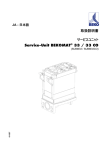

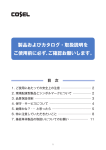

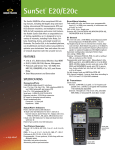
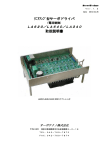
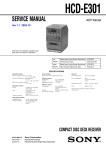
![H8 マイコンボード [ PC/104 ] ( H8/3048F-ONE ) CPU](http://vs1.manualzilla.com/store/data/006601992_2-34c0fa6002e16c743ebe0782ebfe62ac-150x150.png)
